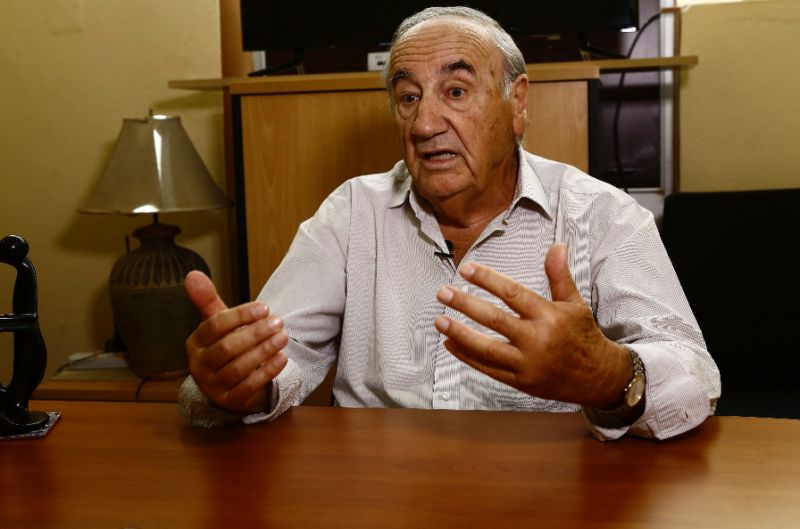
Swiss archaeologist Charles Bonnet is considered a master student of Sudan archaeology. (AFP Photo/Ashraf SHAZLY)
Khartoum (AFP) — A veteran Swiss archaeologist has unearthed three temples in Sudan built thousands of years ago, a discovery he says promises to throw new light on Africa’s buried ancient past.
The round and oval-shaped structures dating from 1,500 to 2,000 B.C. were found late last year not far from the famed archaeological site of Kerma in northern Sudan.
Charles Bonnet, 83, considered a master student of Sudan’s rich archaeological heritage, told AFP that the sites unearthed during recent digs were unlike anything so far discovered.
“This architecture is unknown … there is no example in central Africa or in the Nile Valley of this architecture,” Bonnet said as he wrapped up his months-long excavation.
The temples were found at Dogi Gel — “Red Hill” — located just several hundred meters from Kerma, where Bonnet and his team have been digging for decades.
“At Kerma, the architecture is square or rectangular shaped … and here, just a kilometer away, we have round structures,” he said. “We don’t know of many round temples in the world. … We don’t have examples to compare.”
Bonnet, a wine grower in his youth, believes the treasure trove of three temples offers a never-before-seen insight into African ancient history, a subject that has always challenged researchers.
“Nobody knows this architecture. It’s completely new,” Bonnet said, adding that the new structures did not resemble Egyptian or Nubian architecture, two ancient archaeological influences in the region. “There are no roots today in Africa and we have to find these roots. … This is the secret of Africa.”
‘Discovering a new world’
Bonnet, who has been peeling back layers from the ancient kingdom of Kerma for decades, is credited with showing that Sudan was not merely a satellite of neighboring Egypt and its wealth of ancient relics.
Years ago, he unearthed the seven “Black pharaohs” granite statues of Sudan’s Nubian rulers near the banks of the Nile. Nubia was home to some of Africa’s earliest kingdoms and was known for its rich deposits of gold, ivory and ebony.
During this latest dig, Bonnet said he also discovered “enormous fortifications” at Dogi Gel, an indication that much more awaits to be discovered at the site.
Read more here


